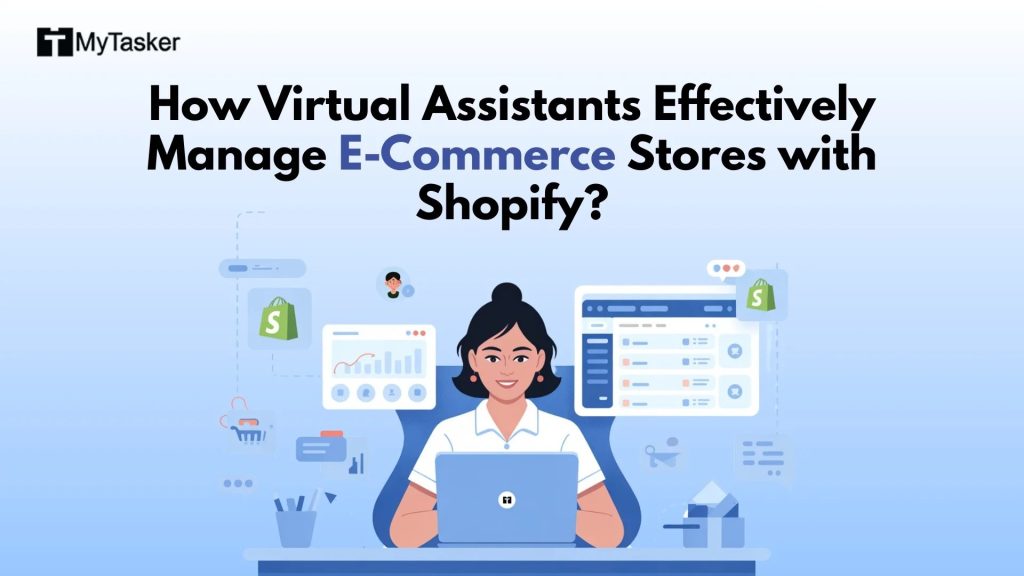
Introduction
In today’s fast-paced e-commerce world, having a Shopify virtual assistant can be a game-changer for your online store. A skilled assistant can handle everything from product uploads and inventory management to customer support and marketing tasks. However, getting the best results from a virtual assistant requires proper training and clear communication. Without a structured approach, even a talented Shopify virtual assistant may struggle to meet your expectations. This article explores the best practices for training your Shopify virtual assistant to ensure seamless collaboration and maximize your store’s success.
Understanding the Role of a Shopify Virtual Assistant
A Shopify virtual assistant is not just someone who performs tasks; they are a strategic partner in growing your e-commerce business. Their responsibilities can include managing product listings, optimizing SEO for your store, monitoring inventory, handling customer inquiries, and even executing marketing campaigns. Understanding their role clearly is the first step toward effective training. When both you and your assistant know the scope of responsibilities, expectations become clearer, and productivity improves significantly.
Hiring a Shopify virtual assistant often saves time and allows business owners to focus on strategy rather than daily operations. However, because these assistants work remotely, miscommunication can easily occur. By taking the time to clearly define roles, you set the stage for a productive working relationship. This clarity will help your virtual assistant prioritize tasks effectively and understand how their efforts contribute to the overall success of your Shopify store.
Setting Clear Expectations and Goals
One of the most critical aspects of training your Shopify virtual assistant is setting clear expectations. Start by defining daily, weekly, and monthly responsibilities. Make sure your virtual assistant knows what tasks are most urgent and which ones can be scheduled for later. Clear communication about deadlines, task priorities, and reporting methods ensures that your assistant can manage their workload efficiently.
Along with expectations, establish measurable goals to track progress. For example, if your assistant is responsible for adding new products, set a goal for the number of products to upload weekly. If they handle customer support, outline response time expectations. Tracking progress using these goals allows you to give constructive feedback and identify areas where additional training may be needed. This approach not only increases productivity but also motivates your virtual assistant to perform at their best.
Providing Comprehensive Training Resources
Training a Shopify virtual assistant effectively requires providing the right resources. Start with detailed documentation that explains your store’s processes, tools, and preferences. Include step-by-step guides for tasks such as product uploading, pricing updates, creating discounts, or handling customer queries. Visual aids, like screenshots or video tutorials, can also help your assistant understand complex tasks more easily.
In addition to documentation, consider using training platforms or software to help your assistant learn faster. For example, project management tools like Trello or Asana can track tasks and deadlines, while Shopify’s own tutorials provide a wealth of information about platform features. Continuous training ensures your assistant stays up-to-date with new features and best practices, improving efficiency and reducing errors over time. Providing comprehensive training is an investment that pays off in smoother operations and higher-quality work.
Establishing Effective Communication Channels
Communication is the backbone of any successful remote collaboration. For a Shopify virtual assistant, effective communication ensures that tasks are completed correctly and on time. Set up clear communication channels, whether it’s email, chat platforms like Slack, or project management tools. Specify preferred communication methods for different scenarios, such as urgent tasks versus routine updates.
Regular check-ins are also essential. Daily or weekly meetings help track progress, discuss challenges, and provide feedback. Encourage your virtual assistant to ask questions and clarify doubts whenever necessary. A culture of open communication reduces misunderstandings, builds trust, and creates a collaborative environment. This is especially important for Shopify stores where attention to detail can directly impact sales and customer satisfaction.
Monitoring Performance and Giving Feedback
Monitoring performance is a key part of managing a Shopify virtual assistant. Use analytics tools within Shopify to track task completion, order processing times, and customer interactions. Observing these metrics allows you to see how well your assistant is performing and identify areas that may need improvement. Remember, monitoring should not feel like micromanagement but rather a way to ensure tasks align with your business goals.
Feedback is equally important. Provide constructive feedback regularly to reinforce good practices and correct mistakes early. Positive reinforcement motivates your assistant, while gentle guidance helps them improve. Create a feedback loop where they can also share insights or suggest improvements. A well-trained Shopify virtual assistant who receives regular feedback will grow more competent, proactive, and valuable to your business over time.
Conclusion
Training your Shopify virtual assistant effectively is essential for running a successful online store. By understanding their role, setting clear expectations, providing comprehensive training resources, establishing strong communication, and monitoring performance, you create a foundation for smooth collaboration. A well-trained assistant not only saves time but also contributes to the growth and profitability of your Shopify store. Investing in proper training and clear processes ensures that your virtual assistant can handle responsibilities confidently, leaving you free to focus on scaling your business.
By following these best practices, you can maximize the benefits of having a Shopify virtual assistant and build a long-term partnership that drives your e-commerce success. Whether you are just starting or looking to optimize your store operations, a trained virtual assistant becomes an invaluable asset in achieving your business goals.
